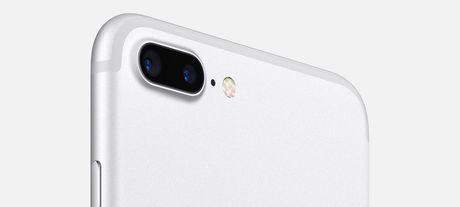Apple dumps the headphone jack for iPhone 7

Apple has announced a series of new products, including the latest generation of the iPhone and the Apple Watch Series 2, but the devices have little to excite in terms of new features.
The aspect of the new iPhone 7 and iPhone 7 Plus that has drawn the most attention is an element the devices lack, rather than a new feature. The smartphones do not have a standard 3.5 mm headphone jack. Instead, the devices will ship with headphones designed to connect using the device’s Lightning port, as well as a Lightning to 3.5 mm adapter.
The sound output functionality of the smartphones has been redesigned to accommodate support for the upcoming AirPods wireless headphones. AirPods use the new Apple W1 chip to provide low-power operation, giving the devices a better battery life than wireless headphones currently on the market.
Apple promises up to 5 hours of listening time on a single charge. The AirPods case also doubles as a wireless charger, so the headphones offer more than 24 hours of listening time before needing to be plugged into the mains. AirPods will launch in late October at an RRP of $229 in Australia.
The decision to remove the headphone jack may prove contentious among Australian consumers. Australian technology analyst company Telsyte conducted surveys ahead of the official announcement asking whether the removal of a jack on any smartphone would affect their purchasing decisions.
Telsyte found that 35% of Australian consumers might not buy a smartphone if it removes the headphone jack, 27% said it would not affect their decisions as long as there are adapters or compatible headphones available, 7% said they already use wireless headphones and 31% are not sure. But iOS users (28%) were less likely to be concerned than Android users (36%).
Both the iPhone 7 and 7 Plus also come with new advanced camera systems, including a new 7-megapixel FaceTime HD camera, a 12-megapixel main camera with optical image stabilisation and other enhancements, as well as a 50% brighter LED flash compared to the iPhone 6s.
Besides the new sound design, Apple is also touting the superior performance and longer battery life of the new Apple A10 Fusion chip. The A10 Fusion’s CPU has four cores, two high-performance cores that can run up to twice as fast as the iPhone 6, and two high-efficiency cores that can run at a fifth of the power of the primary cores.
The iPhone 7 and 7 Plus will be available for preorder in Australia from tomorrow, and will launch next Friday. The starting price will be $1079 for the iPhone 7 and $1269 for the iPhone 7 Plus.
Apple also used its product announcement to introduce the Apple Watch Series 2, which touts features and improvements including 50-metre water resistance, a built-in GPS and more powerful dual-core CPU.
The devices will ship with watchOS 3, which includes its own usability and performance improvements including more personalisation options. They will be available for pre-order from tomorrow in more than 25 countries including Australia, and launch on 16 September.
To support its new product line, Apple announced a partnership with Nike to launch the Apple Watch Nike+, which pairs Nike sports bands with the Apple Watch Series 2 face. Apple has also partnered with Hermès to develop the Apple Watch Hermès band styles.
IoT demands alternatives as 3G sunset looms
The impending 3G shutdown is a daunting prospect for organisations across ANZ that rely on...
Broadband measurement shows online gaming stacks up
The ACCC's latest Measuring Broadband Australia report has found that consumer connections to...
BlackBerry stopping one cyber attack per minute
A new report from BlackBerry's Threat Research and Intelligence team highlights the...




